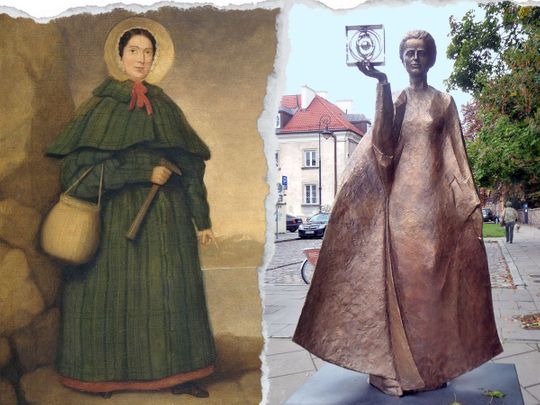
Contrary to popular belief, women have been making significant contributions to the fields of science and mathematics since the very beginning.
Click start to play today’s science-themed Word Search.
From the very first woman to win a Nobel Prize to the person who discovered jumping genes, here are a few amazing women who changed maths and science forever:
1. Mary Anning
Growing up near the cliffs of Lyme Regis in southwest England, Anning’s neighbourhood was teeming with Jurassic fossils. She became a self-taught fossil seeker and learned how to identify, excavate and prepare the relics when the field of paleontology was still in its infancy, according to a report in US-based science news website LiveScience. London paleontologists were able to see their first glimpse of an ichthyosaur – a large marine reptile that lived alongside dinosaurs – because of Anning. She had discovered fossils of the reptile when she was only 12 years old. She is also responsible for finding the first fossil of another extinct marine reptile, the plesiosaur.
2. Sylvia Earle
Born in 1935, American marine biologist and oceanographer Earle spent nearly 70 years diving, beginning when she was only 16 years old. According to a 2017 report in UK-based newspaper The Telegraph, of those 70 years, she has cumulatively spent about a year underwater. Her 1989 profile in US magazine The New Yorker affectionately dubbed her as ‘Her Deepness’, for her immersive approach to ocean science. In 1968, Earle was the first woman scientist to descend in a submersible to a depth of 100 feet in the Bahamas – she did it at four months pregnant. A couple of years later, Earle led a team of five women ‘aquanauts’ on a two-week expedition to explore the sea floor in the underwater lab Tektite II. Since then, she has led more than 100 missions in oceans around the world, and became the first woman to serve as chief scientist of the US-based National Oceanic and Atmospheric Administration (NOAA).
3. Marie Curie
As the first woman to win a Nobel Prize, Polish-French physicist Curie’s work and impact on the world cannot be underestimated. She’s remembered for her discovery of radium and polonium, and for her contributions to the study of radioactivity. But she had many other records under her belt. In 1903, she became the first woman in France to earn a doctorate in physics, and the first in the country to become a professor at the University of Paris, and to teach at the prestigious Sorbonne. She also discovered how to use radium to treat cancer tumours, and in 1911, won a second Nobel – this time in chemistry – for her work in radioactivity. She also pioneered the use of X-ray machines in World War I, and went on to create two medical institutes in Poland and France. Sadly, her exposure to radiation brought on illnesses that led to her death in 1934, and she was buried at the famous Pantheon in Paris, France.
4. Barbara McClintock
American scientist McClintock is known for her pioneering studies in cytogenetics – the study of chromosomes and their genetic expression. It led to her receiving the 1983 Nobel Prize in physiology. However, McClintock almost missed out on becoming a scientist, because her mother was reluctant to send her to university – she thought it would ruin her marriage prospects. Her physician father, however, came to her rescue and paved the way for her to attend. McClintock’s greatest legacy is her discovery that DNA had the ability to change position on a genome, causing traits to be either switched on or off – an idea that came to be known as genetic transposition. Her work on ‘jumping genes’ is still considered fundamental to scientists’ understanding of genetics.
5. Alice Ball
American chemist Ball found a treatment for Hansen’s disease or leprosy when she was just 23 years old. She was both the first woman and the first African-American to earn a master’s degree from the University of Hawaii, and became the first female chemistry professor there as well. Ball’s master’s thesis was about the chemical properties of chaulmoogra oil, a substance derived from the seeds of a tropical evergreen tree, which was already being used to heal leprosy. She revolutionised the treatment by creating a water-soluble solution that could be safely injected, and named it the ‘Ball method’. However, she fell ill shortly after, and died in 1916. The president of the University of Hawaii at the time, Arthur Dean, continued her pioneering work and expanded the scope of the treatment, but renamed it the ‘Dean method’, stripping Ball of any credit for the technique. Later, in a 1922 medical journal, her thesis supervisor Dr Harry Hollmann explicitly gave her the credit for the chaulmoogra solution. It took longer for the university to finally recognise her achievements – a plaque was placed in her honour in 2000 under the university’s only chaulmoogra tree, and February 29 was declared Alice Ball day.
What do you think of these extraordinary women? Play today’s Word Search and let us know at games@gulfnews.com.




